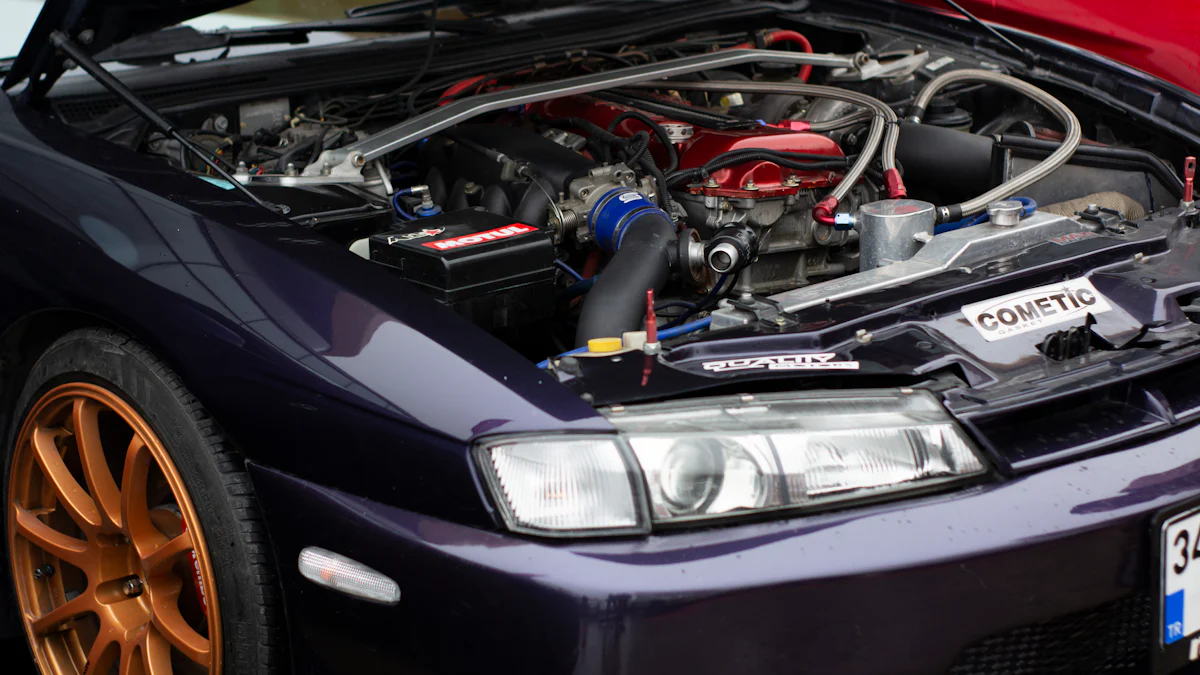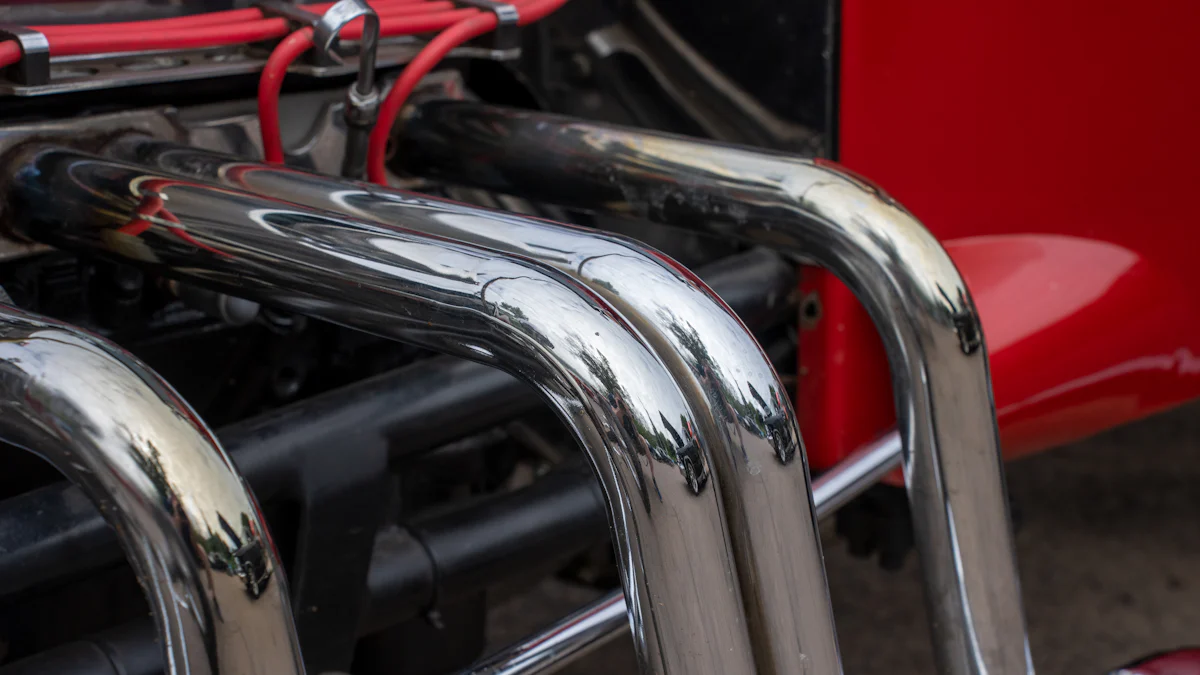
The exhaust manifold in a Nissan Sentra serves as a vital component within the vehicle’s exhaust system. It plays a crucial role by collecting exhaust gases from the engine cylinders and directing them towards the exhaust system for proper disposal. By equalizing pressure and optimizing gas flow, the manifold significantly enhances engine performance and efficiency. This guide aims to provide a comprehensive understanding of the exhaust manifold in a Nissan Sentra, specifically tailored for Nissan Sentra owners, highlighting its significance and practical implications.
Understanding the Exhaust Manifold

Definition and function
The exhaust manifold in a Nissan Sentra serves as a crucial component within the vehicle’s exhaust system. It collects exhaust gases from the engine cylinders, equalizes cylinder pressures, and expels these gases to downstream components for proper disposal. By optimizing gas flow and reducing back pressure, the manifold significantly enhances engine performance and efficiency.
Role in the exhaust system
The exhaust manifold plays a vital role in power production by acting as the collector for the engine’s exhaust gas. It is the initial step in the exhaust system, channeling hot exhaust gases away from the engine cylinders. This process is essential for maintaining optimal engine performance and ensuring smooth operation of the vehicle.
Location in the Nissan Sentra
Engine bay placement
In a Nissan Sentra, the exhaust manifold is strategically located between the engine cylinder head and catalytic converter. This positioning allows it to efficiently collect exhaust gas as it leaves the cylinder head, preparing it for further processing within the vehicle’s exhaust system.
Visual identification
Visually, you can identify the exhaust manifold by its distinctive shape and location within the engine bay. It typically appears as a series of pipes or tubes connected to each cylinder of the engine, leading towards a centralized point where they converge before directing gases towards downstream components.
Headers vs. Exhaust Manifolds
Differences in design
While headers are known for decreasing exhaust back pressure to enhance performance under higher revs, exhaust manifolds retain some back pressure to ensure drivability across a broader rev range. The design differences between headers and manifolds impact how effectively they optimize engine performance based on driving conditions.
Performance implications
Headers tend to improve performance at higher RPMs due to reduced back pressure, whereas exhaust manifolds maintain back pressure for better drivability at various rev ranges. Understanding these differences can help Nissan Sentra owners choose between headers or manifolds based on their driving preferences.
Noise considerations
When comparing headers and manifolds, noise levels are also a significant factor to consider. Headers may result in increased noise due to decreased back pressure, while exhaust manifolds, with their focus on maintaining some back pressure, offer a quieter driving experience overall.
Practical Information
Torque Specifications
Importance of correct torque
- Ensuring the correct torque during installation is vital for the optimal performance and longevity of the exhaust manifold. Proper torque helps maintain a secure connection between components, preventing leaks and ensuring efficient operation of the exhaust system.
Specific torque values for Nissan Sentra
- The Nissan Sentra requires specific torque values for the exhaust manifold to function effectively.
- Following the manufacturer’s recommended torque specifications guarantees proper sealing and alignment, contributing to the overall performance and reliability of the vehicle.
Price Ranges
Cost of OEM vs. aftermarket parts
- When considering exhaust manifold parts, understanding the cost variations between OEM and aftermarket options is crucial. Original Equipment Manufacturer (OEM) parts are designed specifically for Nissan vehicles, ensuring compatibility and quality. On the other hand, aftermarket parts may offer cost savings but could potentially compromise on fitment and durability.
Factors affecting price
- Several factors influence the price range of exhaust manifold parts for a Nissan Sentra.
- The brand, material quality, manufacturing process, and warranty coverage all play a role in determining the final cost. It is essential to weigh these factors carefully when selecting replacement parts to ensure long-term performance and value.
Symptoms of a Leaking Exhaust Manifold
Common signs and symptoms
- Detecting early signs of a leaking exhaust manifold is crucial for maintaining vehicle health. Common symptoms include unusual engine noises, foul odors in or around the vehicle, decreased fuel efficiency, sluggish acceleration, and illuminated warning lights on the dashboard.
Impact on vehicle performance
- A leaking exhaust manifold can have detrimental effects on overall vehicle performance.
- Beyond affecting engine efficiency, it can lead to increased emissions, reduced power output, potential damage to other engine components, and even safety hazards if left unresolved. Regular inspection and prompt action are key to preserving your Nissan Sentra’s performance and longevity.
Maintenance and Replacement

Replacement Costs
Labor and parts costs
- The replacement of the exhaust manifold in a Nissan Sentra involves both labor and parts costs.
- Mechanics typically charge for the time spent removing the old manifold and installing the new one, which can vary based on their hourly rates.
- Additionally, the cost of the replacement parts themselves contributes significantly to the overall expense.
- OEM parts may be more expensive but offer precise fitment and quality assurance, while aftermarket options might provide cost savings with potential differences in durability.
Factors influencing replacement cost
- The replacement cost of an exhaust manifold for a Nissan Sentra is influenced by various factors.
- The specific model year of the vehicle, availability of compatible parts, and labor rates in different regions can all impact the final cost.
- Additionally, the choice between OEM and aftermarket parts, as well as any additional repairs or services required during installation, can further influence the overall replacement expenses.
Importance of Timely Inspection
Preventive maintenance tips
- Implementing regular preventive maintenance practices can help extend the lifespan of your Nissan Sentra’s exhaust manifold.
- Inspecting the manifold for signs of wear or damage at scheduled intervals allows you to address potential issues before they escalate.
- Routine checks on gaskets, fasteners, and overall condition can prevent costly repairs down the line and ensure optimal performance from your exhaust system.
Frequency of inspections
- The frequency of inspections for your Nissan Sentra’s exhaust manifold depends on various factors.
- As a general guideline, it is recommended to inspect the manifold during routine service appointments or whenever you notice unusual engine noises or odors.
- By incorporating regular inspections into your vehicle maintenance schedule, you can catch potential problems early on and maintain peak performance from your exhaust system.
- Summarize the critical aspects discussed regarding the exhaust manifold in a Nissan Sentra.
- Highlight the pivotal role of the exhaust manifold in enhancing vehicle performance and efficiency.
- Conclude with a strong emphasis on proactive maintenance to ensure prolonged functionality and optimal operation of your Nissan Sentra.
Post time: Jun-25-2024



